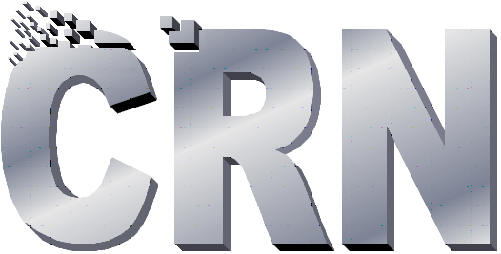|



New!
Nanotech Scenario Series









Join the
conversation at
CRNtalk!
| |
Current Results of Our Research
These pages, marked with
GREEN headings, are published for
comment and criticism. These
are not our final findings; some of these opinions will probably change.
LOG OF UPDATES
CRN Research: Overview of Current Findings
Thirty Essential Nanotechnology Studies - #6
Overview of all studies: Because of the largely
unexpected transformational power of molecular manufacturing, it is urgent to
understand the issues raised. To date, there has not been anything approaching
an adequate study of these issues. CRN's recommended series of
thirty essential studies
is organized into five sections, covering fundamental theory, possible
technological capabilities, bootstrapping potential, product capabilities, and
policy questions. Several preliminary conclusions are stated, and because our
understanding points to a crisis, a parallel process of conducting the studies
is urged.
CRN is actively looking for researchers interested in
performing or assisting with this work. Please contact CRN Research Director
Chris Phoenix if you would like more information or if you have comments on
the proposed studies.
| Study #6 |
What
other chemistries and options should be studied? |
| |
This is a grab bag
of questions intended to suggest possibilities that may have been
overlooked. |
| Subquestion |
What other
chemistries may be suitable for atomically precise programmable assembly? |
| Preliminary answer |
Merkle has
suggested small cubical molecules with boron and nitrogen. Phoenix and
Toth-Fejel
suggested POSS (polyhedral oligomeric silsesquioxane) as an early
building block. Silica is interesting, especially since its deposition can
be catalyzed by proteins such as R5. Perhaps precise metal nanoparticles
could be fused. Other possibilities no doubt will be offered. |
| Subquestion |
What is the
potential of top-down technologies using imprecise chemistry, in terms of
self-manufacture and device performance? (e.g. extrusion, DPN, metal-over-buckytube,
MEMS, inkjet, stereolithography, masked or hologram-switched optical surface
activation) |
| Preliminary answer |
Some of these
appear to have fairly high throughput. Many are flexible in the materials
they can deposit. More work will be needed to determine what kinds of
devices, especially bearing surfaces, can be made with these imprecise
technologies. |
| Subquestion |
What about
atom holograms and atom lasers? |
| Preliminary answer |
Unknown. Atom
holograms, a way of programmably redirecting a beam of atoms into complex
deposition patterns, were
demonstrated in Japan several years ago, and have not made a lot of news
since. Atom laser is a confusingly similar name for a very different
technology: a way to reduce a cloud of atoms to a single quantum state,
making them extremely controllable. The technologies may be synergistic.
|
| Subquestion |
Are there
synergies between any of the considered technologies, making problems easier
to solve or improving performance of a technology? |
| Preliminary answer |
Almost certainly. |
| Conclusion |
Molecular manufacturing may be easier than we realize. Many possibly
helpful technologies have not yet been assessed. There's no way to know
without studying multiple alternatives.
|
| Other studies |
1.
Is
mechanically guided chemistry a viable basis for a manufacturing technology?
2. To what extent is molecular manufacturing counterintuitive and
underappreciated in a way that causes underestimation of its importance?
3. What is
the performance and potential of diamondoid machine-phase chemical
manufacturing and products?
4. What is the performance and potential of biological programmable
manufacturing and products?
5. What is the performance and potential of nucleic acid
manufacturing and products?
7. What
applicable sensing, manipulation, and fabrication tools exist?
8. What will be required to develop diamondoid machine-phase chemical
manufacturing and products?
9. What will be required to develop biological programmable
manufacturing and products?
10. What will be required to develop nucleic acid manufacturing and
products?
11. How rapidly will the cost of development decrease?
12. How could an effective development program be structured?
13. What is
the probable capability of the manufacturing system?
14. How capable will the products be?
15. What will the products cost?
16. How rapidly could products be designed?
17. Which
of today's products will the system make more accessible or cheaper?
18. What new products will the system make accessible?
19. What impact will the system have on production and distribution?
20. What effect will molecular manufacturing have on military and
government capability and planning, considering the implications of arms
races and unbalanced development?
21. What effect will this have on macro- and microeconomics?
22. How can proliferation and use of nanofactories and their products
be limited?
23. What effect will this have on policing?
24. What beneficial or desirable effects could this have?
25. What effect could this have on civil rights and liberties?
26. What are the disaster/disruption scenarios?
27. What effect could this have on geopolitics?
28. What policies toward development of molecular manufacturing does
all this suggest?
29. What policies toward administration of
molecular manufacturing does all this suggest?
30. How can appropriate policy be made and implemented?
|
| Studies should begin
immediately. |
The situation is
extremely urgent. The stakes are unprecedented, and the world is unprepared.
The basic findings of these studies should be verified as rapidly as
possible (months, not years). Policy preparation and planning for
implementation, likely including a crash development program, should begin
immediately. |
DEVIL'S ADVOCATE —
Submit your criticism, please!
(Sorry, no one has complained about this page yet, and we
couldn't think of anything to write. Please
contact us
with your questions, criticisms, and other suggestions.)
|
